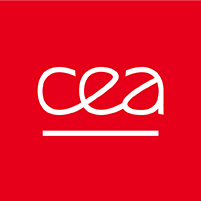Jobs
All our offers
-
phD
Artful guidance of test generation tools
Fuzzing is an automatic test generation technique. It consists in repeatedly executing a program with automatically generated inputs, in order to trigger crashes, symptoms of underlying bugs in the code, which can then be fixed. A major challenge in this area is moving from indiscriminate exploration of how programs work to artful guidance towards the...
-
phD
Quantum device integration on Ge/SiGe heterostructures
Spin qubits in semiconductors quantum dots offer a fast scaling perspective of quantum processors by leveraging the manufacturing techniques of the microelectronics industry. To explore this approach, industrial research teams implemented qubits directly on their existing routes (e.g. FDSOI at CEA-Leti or FinFET at Intel). However, these devices suffer from an important electrostatic disorder stemming...
-
phD
Conditional generative model for dose calculation in radiotherapy
Particle propagation through matter by Monte Carlo method (MC) is known for its accuracy but is sometimes limited in its applications due to its cost in computing resources and time. This limitation is all the more important for dose calculation in radiotherapy since a specific configuration for each patient must be simulated, which hinders its...
-
phD
Partitioning of spin Qubits control electronics architecture: co-design of cryoCMOS and room-temperature hardware
Quantum algorithms capable of demonstrating a quantum advantage will require the use of quantum processors (QPU) with several thousands of qubits. The design of such a quantum computer is a multidisciplinary challenge at the heart of quantum engineering. Control electronics face particular constraints related to the cryogenic temperature at which qubits operate. Leveraging its expertise...
-
phD
Graph Neural Network-based power prediction of digital architectures
Performing power analysis is a major step during digital architecture development. This power analysis is needed as soon as the RTL (Register Transfer Level) coding starts, when the most rewarding changes can be made. As designs get larger, power analysis relies on longer simulation traces and becomes almost impossible, as the process generates huge simulation...
-
phD
A formal framework for the specification and verification of distributed processes communication flows in clouds
Clouds are constituted of servers interconnected via the Internet, on which systems can be implemented, making use of applications and databases deployed on the servers. Cloud-based computing is gaining in popularity, and that includes the context of critical systems. As a result, it is useful to define formal frameworks for reasoning about cloud-based systems. One...
-
phD
Stabilizer-universal graph states for robust quantum networks and quantum error correction
The last years have seen notable advances in quantum technologies, consolidating the development of basic requirements for the deployment of future quantum networks. Such networks are essential to distributed quantum information applications, and may serve various purposes, e.g., enabling the transmission of quantum states between physically distant parties, or improving the computational capabilities of quantum...
-
phD
Modeling and Simulation of Human Behavior for Human-Centric Digital Twins
Thanks to synchronized virtual representation, digital twins are a means to produce analyses, predictions and optimizations of real-world systems. However, some of these systems tightly engage with humans so that the role of the latter is determining in the system’s operation. This is for example the case in contexts such as industry 5.0 or the...




